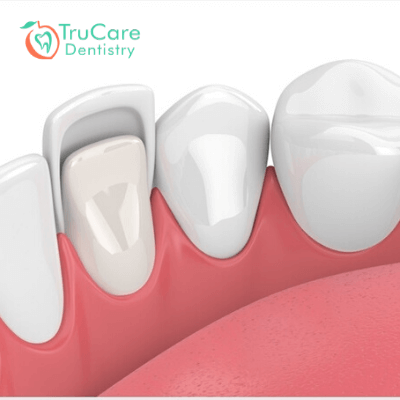If you have crooked, stained or discolored front teeth then the simple application of veneers brings about magical transformation. Your looks and smile improve dramatically. You could get veneers from office specializing in dental veneers Roswell GA and raise your confidence levels. It is interesting to know the journey of the dental veneer from the time it was first prepared by Charles Pincus in 1928 for Hollywood stars.
He used acrylic but due to lack of a suitable adhesive the veneers had to be put on and then taken off. The benefits of veneers started percolating down to common people during the 1950s and became established by the 1980s. Dr Michael Bunocore started etching teeth to provide a better bond for the glue, a practice that is now commonplace. J R Calamia and R J Simonsen conducted research into combining dental etch with special bonding resin and that paved the way for almost permanent veneers.
Aesthetic and practical considerations
There was little choice back then. Even the best cosmetic dentist was constrained by availability of material and techniques. Therefore, when you chose to go for veneers the dentist would put in veneers of a uniform shade and shape. Such veneers were instantly recognizable whenever people wearing them smiled or talked and were called chicklet teeth. This, of course, led to a rise in expectation that the veneer should look natural and be similar in color, shade and transparency to other teeth in the mouth so as to be indistinguishable. Happily, technology has evolved to the point where dentists can use the right mix of materials and shade it just right to match other teeth in your mouth. Going a step further, the natural look is created by introducing slight surface imperfections in the veneer.
Computer imaging
The best cosmetic dentists these days give you the benefit of computer imaging. Computer simulations by the dentists using specialized software help you previsualize what the look will be like after the veneer is put in place. Your dentist may go a step further by applying tooth colored filling material on your teeth to change the look.
Provisional veneers
From the days when the dentist measured your teeth and then put the veneer in place the situation has evolved somewhat. Today, you go to a dentist for cosmetic dentistry and veneers will be made after measurement but, in the meanwhile, provisional veneers go in place to help you familiarize yourself with the aesthetics and speech functions.
Detailed considerations
The veneer technique, apparently, is simple. Your dentist measures your teeth, prepares the veneer and then grinds the teeth and glues the veneer in place. However, today, the process has evolved and it is far more complex. Dentists need to evaluate current position of the teeth, plan the treatment, identify midline position, lip fullness, occlusion, tooth shape and incisal edge position. Then there are other factors to consider such as desired color change with the choice of material. Another important consideration is how much material must be removed. The usual depth is from 0.3 to 0.8 mm. There are dentists who adopt a conservative approach and favor minimal removal of enamel and minimum preparation, giving due consideration to the patient’s desires.
Yet another consideration is that of contouring. The preparation involves removal of some enamel and gum tissue. This can lead to periodontal issues and patients need to take extra care about maintaining dental hygiene. This must be read together with the type of material used and the method of making the veneer. Stacked feldspathic porcelain was the material first used and then came pressable ceramics but pressable ceramics could not be made quite thin and had a thickness of 0.7 to 1.0 mm which led to dentists grinding away a greater portion, or almost all, of the enamel. Dentists have to do a balancing job of alignment and contouring with good adhesion strength. It is preferable to have minimal preparation to safeguard the enamel layer.
Early generation of veneers were about 0.5 mm in thickness, tapering down at the edges. Today’s thin veneers have a thickness of 0.3mm minimum.
Modern techniques make use of pressing and layering allowing the dentist to create minimum or no prep veneers with great aesthetic properties.
Materials
Materials used in veneers have evolved over time. Pincus used acrylic but it gave way to porcelain. Porcelain is a general term covering a variety of ceramic materials like aluminum oxide based ceramic, Zirconia and lithium disilicate. You have more freedom of choice in selection of the porcelain material for veneers to provide a perfect fit and look. Your dental veneers Roswell GA clinic should help you pick the type that will suit you. Porcelain is hard wearing, slightly translucent and can be tinted to match your teeth for a natural look.
Then there is composite material that makes use of polymers alone or mixed with glass.
Process
The process of manufacturing veneers has evolved in the past few decades. Early porcelain veneers were almost invariably made by third parties to the measurements taken by the dentist. Feldspathic veneers are created using the refractory die or refractory cast process or even a platinum foil technique. Another type of material used for in-situ veneer application is the pressable ceramics. Lithium disilicate is proving to be a great material for thin porcelain veneers because of ease of manufacture and good strength.
If you want veneers on an urgent basis then your dental veneers Roswell GA clinic will adopt the composite process using CAD/CAM milling technique. A 3D camera captures an image of the tooth and the machine then mills the veneers from a block of material while you wait.
Veneers have evolved in terms of technology, technique and materials. Today, there is no need to put up with yellowed teeth, teeth with gaps or misaligned and crooked teeth. Walk into your dental veneers Roswell GA clinic, get a consultation and you can walk out with veneers and a bright, sparkling smile on your face.

